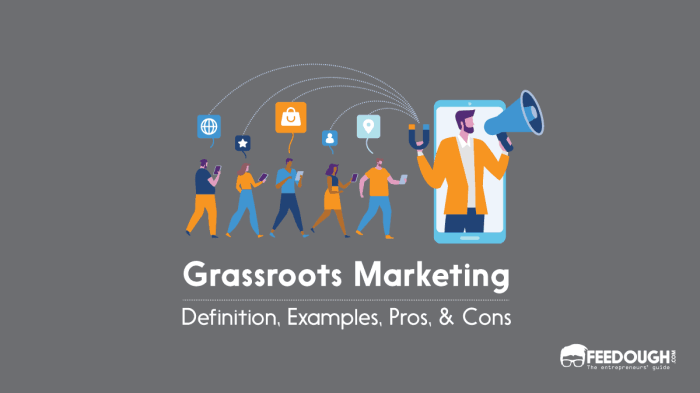Marketing myopia examples in sports offer a compelling lens through which to examine the perils of focusing solely on short-term gains at the expense of long-term sustainability. This article delves into the concept of marketing myopia, its manifestations in sports organizations, and the consequences of ignoring the needs of fans and failing to innovate.
From overemphasizing winning to underestimating the importance of fan engagement, sports organizations have often fallen prey to marketing myopia. This article provides insights into these missteps, highlighting the importance of a balanced approach that considers both competitive success and the needs of the fanbase.
Marketing Myopia Examples in Sports

Marketing myopia is a short-sighted focus on the immediate and tangible aspects of a business, neglecting the long-term and intangible factors that contribute to customer satisfaction and loyalty. In the context of sports organizations, marketing myopia can manifest in a narrow focus on winning or generating revenue, while overlooking the needs and interests of fans, the community, and other stakeholders.
A classic example of marketing myopia in sports is the overemphasis on winning at the expense of fan engagement. Some sports organizations prioritize short-term success by acquiring star players and investing heavily in training, but neglect to cultivate a loyal fan base through meaningful interactions, fan appreciation events, and community outreach programs.
This can lead to a decline in attendance, merchandise sales, and overall fan satisfaction.
Consequences of Marketing Myopia for Sports Organizations
Marketing myopia can have severe consequences for sports organizations, including:
- Loss of market share: By failing to adapt to changing consumer preferences and market trends, sports organizations can lose market share to competitors who are more responsive to the needs of fans.
- Fan alienation: When sports organizations prioritize winning or revenue generation over fan engagement, they risk alienating their fan base. Fans may feel disconnected from the organization and less inclined to attend games, purchase merchandise, or support the team.
- Damage to reputation: Marketing myopia can damage the reputation of sports organizations, making them appear greedy, out of touch, or uncaring. This can make it difficult to attract sponsorships, partnerships, and other forms of support.
Overemphasis on Winning

Overemphasizing winning in sports can lead to marketing myopia, a condition in which a company focuses excessively on short-term sales goals at the expense of long-term profitability and customer satisfaction. In the context of sports, this means prioritizing winning games and championships over other aspects of the business, such as fan engagement, community involvement, and financial sustainability.
Several sports organizations have fallen into the trap of overemphasizing winning. For example, the New York Yankees, one of the most successful teams in baseball history, have long been known for their “win-at-all-costs” mentality. While this approach has brought them numerous championships, it has also alienated some fans who feel that the team has become too focused on winning and not enough on providing a positive fan experience.
Negative Impact on Fan Engagement and Loyalty
Overemphasizing winning can also have a negative impact on fan engagement and loyalty. When fans feel that a team is only interested in winning, they may become less invested in the team’s success. This can lead to lower attendance, decreased merchandise sales, and a decline in overall fan loyalty.
Ignoring Fan Needs
Failing to recognize and address the needs and desires of fans can lead to marketing myopia in sports. Organizations that focus solely on winning or financial gain without considering fan engagement and satisfaction risk alienating their most valuable asset.
Several sports organizations have faced backlash for ignoring fan needs. For example, the NFL’s decision to move the Rams from St. Louis to Los Angeles in 2016 sparked outrage among loyal fans who felt betrayed. Similarly, the Cleveland Browns’ relocation to Baltimore in 1995 left a bitter taste in the mouths of Browns fans, who felt their team had been taken away from them.
Importance of Fan Needs, Marketing myopia examples in sports
Understanding and catering to the needs of fans is crucial for building a sustainable sports business. Fans are the lifeblood of any sports organization, and their loyalty and support are essential for long-term success. By engaging with fans, listening to their feedback, and providing them with a positive experience, organizations can create a strong and enduring fan base.
Failure to Innovate
Failure to innovate is a common pitfall that can lead to marketing myopia in sports. When organizations become complacent and resistant to change, they can miss out on new opportunities and fail to keep pace with changing consumer preferences and market trends.
One example of a sports organization that has resisted change is the International Association of Athletics Federations (IAAF). For many years, the IAAF resisted the use of new technologies, such as video replay and electronic timing. This resistance led to a number of controversies and scandals, and eventually forced the IAAF to change its stance.
Another example of a sports organization that has failed to innovate is the National Hockey League (NHL). The NHL has been slow to adopt new technologies, such as player tracking and virtual reality. This has led to a decline in viewership and revenue, and has made it difficult for the NHL to compete with other sports leagues.
Innovation is essential for sports organizations to keep pace with changing consumer preferences and market trends. By embracing new technologies and ideas, sports organizations can create new products and services, improve the fan experience, and increase revenue.
Case Studies

To further illustrate the concept of marketing myopia in sports, let us examine specific case studies that demonstrate how organizations have suffered the consequences of failing to adapt to changing market needs.
The following table presents four case studies of marketing myopia in sports:
Case Studies of Marketing Myopia in Sports
| Sports Organization | Myopic Behavior | Consequences | Lessons Learned |
|---|---|---|---|
| National Hockey League (NHL) | Overemphasis on violence and fighting | Declining fan attendance and TV ratings | The NHL realized that fans were seeking a more family-friendly experience and adjusted its rules to reduce violence. |
| International Cricket Council (ICC) | Ignoring the growing popularity of Twenty20 cricket | Loss of market share to other cricket formats | The ICC recognized the need to adapt to the changing preferences of cricket fans and introduced the Twenty20 World Cup. |
| Major League Baseball (MLB) | Failure to innovate and embrace new technologies | Stagnant growth and declining fan engagement | MLB has invested in new technologies such as Statcast and MLB.TV to enhance the fan experience and attract new fans. |
| Fédération Internationale de Football Association (FIFA) | Overemphasis on revenue generation and corruption | Loss of public trust and sponsorships | FIFA has implemented reforms to improve transparency and accountability and restore its reputation. |
Key Questions Answered: Marketing Myopia Examples In Sports
What are the key characteristics of marketing myopia in sports?
Marketing myopia in sports is characterized by a narrow focus on winning or other short-term goals, while neglecting the broader needs of fans and the long-term health of the organization.
How can overemphasizing winning lead to marketing myopia?
Overemphasizing winning can lead to marketing myopia by diverting resources away from other important areas, such as fan engagement, innovation, and building a sustainable business model.
Why is it important for sports organizations to understand and cater to the needs of fans?
Understanding and catering to the needs of fans is crucial for sports organizations because fans are the lifeblood of the business. They provide revenue, support, and create a positive atmosphere that enhances the overall experience.